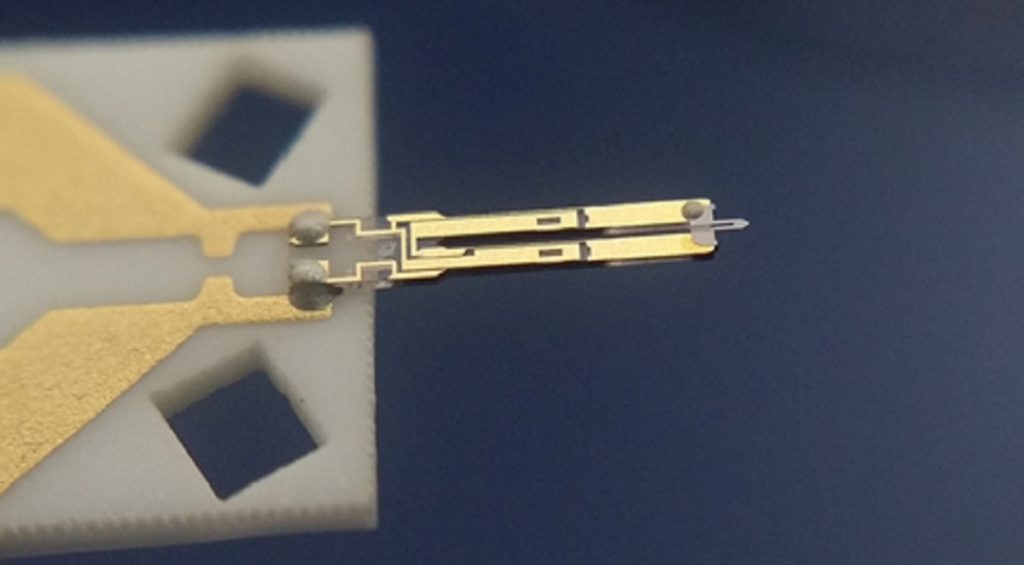A NANOSENSORS™ self-sensing self-activating Akiyama probe was used in a home-built Scanning Probe Microscope for this interesting research article.
*Florian Lauraux, Sarah Yehya, Stéphane Labat, Jean‐Sébastien Micha, Odile Robach, Oleg Kovalenko, Eugen Rabkin, Olivier Thomas, Thomas W. Cornelius
In‐situ force measurement during nano‐indentation combined with Laue microdiffraction
Nano Select , Volume2, Issue1, January 2021, Pages 99-106
DOI: https://doi.org/10.1002/nano.202000073

Please have a look at the abstract below or follow the external link above to read the full article.
Abstract:
“For the characterization of the mechanical properties of materials the precise measurements of stress‐strain curves is indispensable. In situ nano‐mechanical testing setups, however, may lack the precision either in terms of strain or stress determination. Recently, the custom‐built scanning force microscope SFINX was developed which is compatible with third‐generation synchrotron end‐stations allowing for in situ nano‐mechanical tests in combination with nanofocused synchrotron x‐ray diffraction that is highly sensitive to strain and defects. The usage of a self‐actuating and self‐sensing cantilever tremendously increases the compactness of the system but lacks deflection sensitivity and, thus the force measurement. This deficiency is resolved by in situ monitoring the diffraction peaks of the Si cantilever by Laue microdiffraction during the nano‐indentation of a gold crystal. The orientation and, hence, the deflection of the Si cantilever is deduced from the displacement of the Si Laue spots on the detector giving force accuracies of better than 90 nN. At the same time, the dislocation density in the indented Au crystal is tracked by monitoring the Au Laue spots eventually resulting in complete stress‐dislocation density curves.”*
Open Access: The article “In‐situ force measurement during nano‐indentation combined with Laue microdiffraction” by Florian Lauraux, Sarah Yehya, Stéphane Labat, Jean‐Sébastien Micha, Odile Robach, Oleg Kovalenko, Eugen Rabkin, Olivier Thomas, Thomas W. Cornelius is licensed under a Creative Commons Attribution 4.0 International License, which permits use, sharing, adaptation, distribution and reproduction in any medium or format, as long as you give appropriate credit to the original author(s) and the source, provide a link to the Creative Commons license, and indicate if changes were made. The images or other third party material in this article are included in the article’s Creative Commons license, unless indicated otherwise in a credit line to the material. If material is not included in the article’s Creative Commons license and your intended use is not permitted by statutory regulation or exceeds the permitted use, you will need to obtain permission directly from the copyright holder. To view a copy of this license, visit http://creativecommons.org/licenses/by/4.0/.